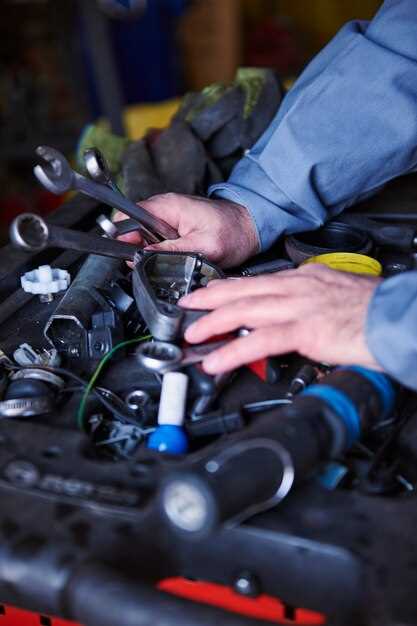
In the high-stakes world of racing, the performance of a vehicle’s engine can be the difference between victory and defeat. Rapid acceleration, sharp turns, and prolonged high speeds place immense strain on engine components, making diagnostics a critical aspect of maintaining competitive edge. Understanding how to swiftly identify potential failure points can not only save precious time but also safeguard the engine from catastrophic damage during a race.
Engine diagnostics during racing involves more than just listening for ominous sounds or watching for warning lights on the dashboard. It requires a keen attention to detail, an understanding of engine mechanics, and the ability to interpret data in real-time. This article delves into effective strategies for diagnosing engine problems effectively while on the track, ensuring that racers can respond quickly to any irregularities that may arise under pressure.
As technology advances, so do the tools available for real-time engine diagnostics. By embracing modern diagnostic tools and techniques, racers can enhance their ability to foresee and mitigate potential failure scenarios, ultimately leading to better performance and increased chances of success. Join us as we explore the essential methods for diagnosing engine issues, empowering racers to maintain optimal performance amid the adrenaline-fueled chaos of competitive racing.
Identifying Common Symptoms of Engine Failure During a Race

During a race, engine performance is critical, and any sign of trouble can jeopardize not only the race outcome but also the safety of the driver. Recognizing the common symptoms of engine failure can facilitate timely diagnostics and preventive measures.
1. Unusual Noises: Tapping, knocking, or grinding sounds emanating from the engine compartment are telltale signs of potential failure. These noises often indicate issues such as worn bearings or failing components that require immediate attention.
2. Loss of Power: A sudden drop in acceleration or difficulty in maintaining speed can suggest engine problems. This symptom may be linked to fuel delivery issues, ignition failures, or mechanical malfunctions within the engine itself.
3. Overheating: Elevated temperature readings can signify inadequate coolant flow, a failing water pump, or a malfunctioning thermostat. Overheating can lead to catastrophic engine failure if not addressed promptly.
4. Warning Lights: Modern racing vehicles are equipped with engine diagnostics that monitor performance. Illuminated warning lights on the dashboard can indicate a variety of issues, from low oil pressure to critical system failures.
5. Smoke or Steam: The presence of smoke, whether white, blue, or black, may suggest burning oil, coolant leaks, or fuel combustion problems. Steam can indicate severe overheating or a coolant leak, necessitating immediate investigation.
6. Vibrations: Excessive vibrations experienced while racing can signal engine misalignment, imbalanced components, or internal mechanical issues. Tracking the source of these vibrations is crucial for preventing further damage.
7. Exhaust Issues: Changes in exhaust color or odor can provide insights into engine health. Blue smoke may indicate oil consumption, while a strong smell of fuel could signal incomplete combustion or a fuel system fault.
Being aware of these symptoms during a race allows drivers and teams to perform essential diagnostics effectively. Addressing engine problems as soon as they are identified can be the key to successful and safe racing.
Utilizing Diagnostic Tools for Real-Time Engine Monitoring
In the high-stakes environment of racing, the ability to monitor engine performance in real-time is crucial for success. Utilizing diagnostic tools can provide invaluable insights into engine conditions, allowing teams to address issues before they escalate into significant failures.
Real-time diagnostics involve the use of advanced tools such as OBD-II scanners, telemetry systems, and data acquisition devices. These instruments collect and relay critical information regarding engine temperature, pressure, RPM, and fuel efficiency, among other parameters. With this immediate feedback, engineers and drivers can make informed decisions on the track.
For instance, if a diagnostic tool indicates a spike in engine temperature, it signals a potential failure possibility, allowing the team to adjust engine settings or modify the race strategy to mitigate risks. Continuous monitoring of exhaust gases and other emissions can also reveal inefficiencies that may lead to performance issues or engine wear.
Moreover, analyzing historical data alongside real-time readings can highlight patterns that predict impending failures. By employing these diagnostic tools, teams can enhance their understanding of engine behavior under race conditions, improving both reliability and performance. This proactive approach to engine management can be the difference between winning and losing on the track.
Implementing Quick Fix Strategies to Minimize Race Impact

In the high-stakes environment of racing, engine failure can lead to significant setbacks. Implementing quick fix strategies is essential to minimizing race impact and keeping vehicles competitive on the track. Here are some effective strategies to consider:
-
Pre-Race Inspection:
- Thoroughly check engine components before the race.
- Look for signs of wear, leaks, or loose fittings.
- Ensure fluid levels are optimal to prevent overheating.
-
Engine Diagnostics Tools:
- Utilize onboard diagnostics to monitor engine parameters.
- Identify issues in real-time, allowing for quick responses.
- Keep a toolkit with essential diagnostic equipment accessible.
-
Immediate Repairs:
- Have a team capable of executing quick repairs during pit stops.
- CARRY spare parts for crucial components that are more prone to failure.
- Train crew members on fast troubleshooting techniques.
-
Temporary Solutions:
- Use duct tape or zip ties for minor hose leaks.
- Implement temporary fixes that can sustain engine function long enough to finish the race.
- Adjust engine settings to ease stress on failing components.
-
Communication:
- Maintain clear communication between drivers and pit crew.
- Enable immediate reporting of unusual engine behavior.
- Adjust strategy in response to real-time feedback from the car’s performance.
By preparing in advance and having a well-defined plan for addressing engine failures, teams can significantly minimize the negative effects on race performance. Quick fixes not only keep the vehicle operational but also preserve a competitive edge on the track.












